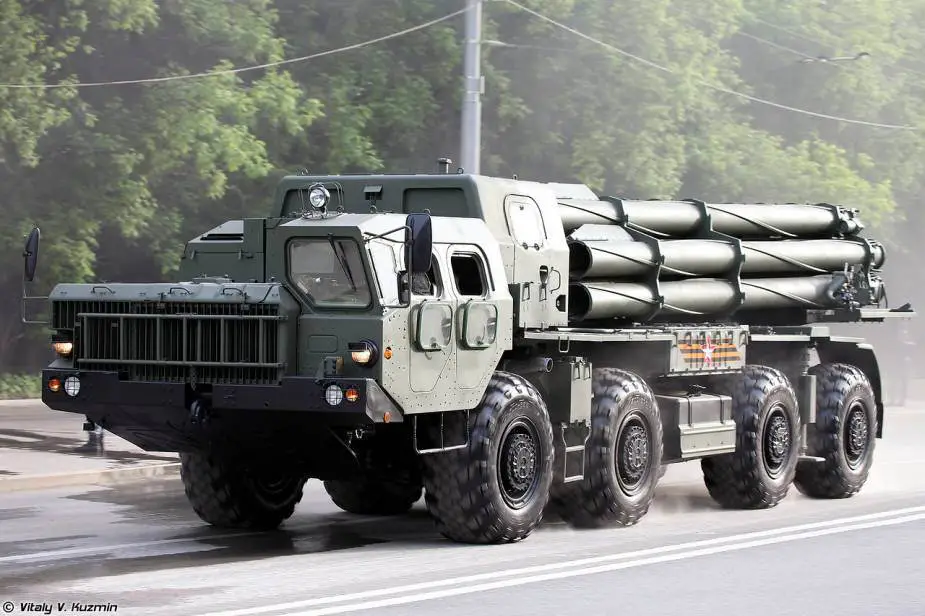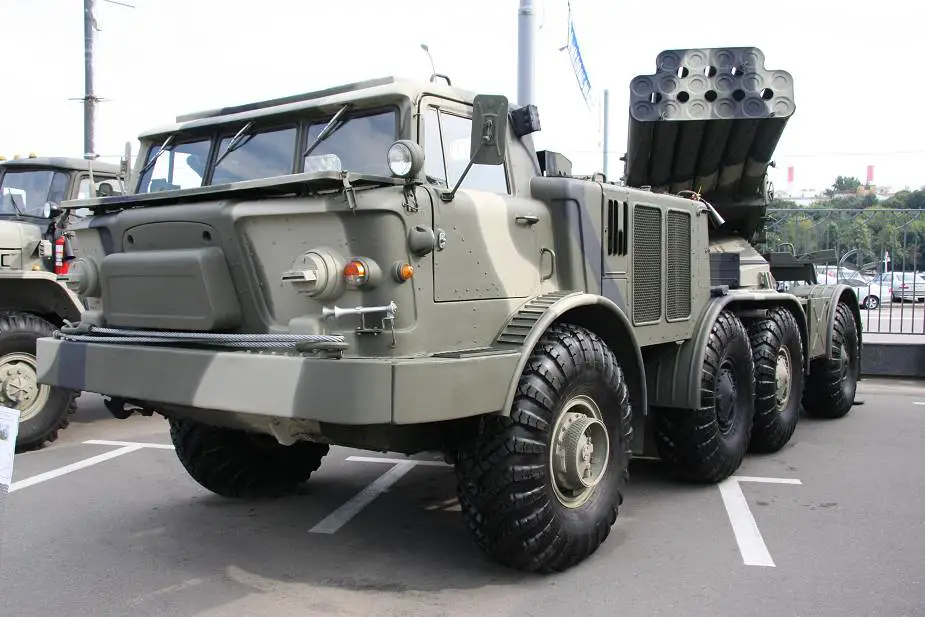Analysis: News MLRS Multiple Launch Rocket Systems of Russian army Part 1
The Victory Day military parade on June 24, 2020, displayed the latest Russian weapons. Derivatsia air defense, TOS-2 flamethrowers and other hardware were for the first time presented to the public. The most secret Tornado-S Multiple Launch Rocket System (MLRS) also drove in Red Square. The Independent Military Review writes about MLRS prospects.
Follow Army Recognition on Google News at this link

Russian army Tornado-S 300mm MLRS Multiple Launch Rocket System (Picture source Vitaly Kuzmin)
The tornado-S design began in the late 2000s. In 2012, the Defense Ministry said trials had begun. In May 2019, Tecmash CEO Alexander Kochkin said the first brigade MLRS set will be supplied by the end of the year. It became known in late 2019 that Tornado-S was supplied to the 439th artillery brigade of the Southern Military District.
It was believed that Tornado-S is equipped with modular launchers where guides are united into a single bloc. Each module can be easily replaced after fire by a transloader. The older BM-30 Smerch MLRS needs to recharge each guide separately.
The parade showed that it is difficult to distinguish Tornado-S from the predecessor. Visually, it differs from Smerch by a small satellite antenna receiver and radio antennas. The latter is likely the elements of automatic control.
The Russian armed forces also operate Uragan-1M MLRS. However, it was not displayed at the parade, although Deputy Prime Minister Yuri Borisov said in September 2016 that Uragan-1M was supplied to the troops.
In contrast to Tornado-S, the new Uragan can fire both 220mm shells and heavier and longer-range 300mm projectiles. Available photos show the latest MLRS uses modular launchers.
Until recently, the Russian armed forces had a strict MLRS system inherited from the Soviet army. 122mm Grad was operated by division artillery. Each artillery regiment of a motorized rifle or tank division had a Grad battalion. In 2009, rocket artillery units joined combined arms brigades.

Russian army BM-27 Uragan 220mm MLRS Multiple Launch Rocket System (Picture source Army Recognition)
All artillery brigades had one-two battalions of 220mm BM-27 Uragan MLRS. Heavier and longer-range Smerch operated in separate artillery brigades of the so-called district front complex. In peacetime, they were directly subordinated to the military district command and became the personal reserve of the front commander in wartime.
The system began to change in 2016 because of two reasons. Firstly, modern MLRS of the Tornado family and Uragan-1M were supplied. Secondly, the experience of modern wars and conflicts was reviewed.
It was believed that MLRS has to replace aviation in modern conflicts and mostly fire single precision smart projectiles. Thus, the arsenals of US M270 weapons received several types of precision missiles. They were engaged by US, UK and French forces in fighting in Afghanistan and Iraq.
The war in Syria showed that the main MLRS advantage is the ability to deliver a massive strike on a big space in seconds. In Syria, such strikes destroyed terrorist fortifications. Grad, Uragan and Smerch successfully destroyed accumulations of terrorists in the desert.


























